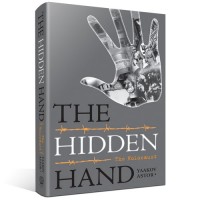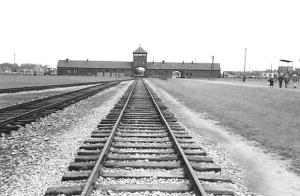Books by Yaakov Astor
My New Book – R’ Miller on Bitachon
I’m happy to announce my newest book, Rav Avigdor Miller on Emunah and Bitachon. Please stayed tuned to this blog for excerpts. Meanwhile, here is a brief description of the book:
 Virtually every decision we make is affected by our grasp of the principles of emunah and bitachon (faith and trust in Hashem). But where do we turn to gain clarity about these issues, to find answers to our many questions?
Virtually every decision we make is affected by our grasp of the principles of emunah and bitachon (faith and trust in Hashem). But where do we turn to gain clarity about these issues, to find answers to our many questions?
Rav Avigdor Miller, zt”l, answered that need for thousands of Jews, and more than a decade after his passing, he continues to do so. Rav Miller left behind a vast legacy of recorded shiurim and writings. Now, thanks to the efforts of Rabbi Yaakov Astor, an important part of that legacy has been transformed into this monumental book.
The themes of emunah and bitachon permeated a great many of Rav Miller’s shiurim and seforim, but the material was scattered in many different places and was thus hard to access. Now, that eye-opening material has been collected, assembled and organized into a fascinating question-and-answer book, a book that will answer your questions and bring you clarity when you need it most. Rav Miller’s bold, straightforward approach sheds a brilliant light on the most troubling, thorny issues that confront us. His crystal clear Torah wisdom will profoundly impact your life.
“This sefer will surely enlighten and inspire every reader.”
— Rabbi Shmuel Miller, Rosh Yeshiva, Yeshiva Gedolah Bais Yisroel
The Hidden Hand & The Holocaust
 Last year I spoke at the Holocaust Museum & Study Center in Spring Valley, NY, on Tisha B’Av. Feel free to download, listen and distribute this lecture entitled: Astor Tisha Bav 5770 Finkelstein Holocaust Museum.
Last year I spoke at the Holocaust Museum & Study Center in Spring Valley, NY, on Tisha B’Av. Feel free to download, listen and distribute this lecture entitled: Astor Tisha Bav 5770 Finkelstein Holocaust Museum.
National Tragedies on Tisha B’Av in History
“Then the entire congregation raised a loud cry, and the people wept that night.” (Bamidbar 14:1)
Rabbah said in the name of Rabbi Yochanan: “That night was Tisha B’Av. Hakodosh Baruch Hu, said, ‘They cried for no valid reason; I will establish for them [this night as] a weeping for generations.’” (Sotah 35a)
***
On the ninth of Av it was decreed that our fathers should not enter the [Promised] Land, the First and Second Temples were destroyed, Beitar was captured and the City [Jerusalem] was ploughed up. (Mishnah Taanis 4:6)
***
- Bnai Yisrael were told they would not live to enter the Land of Israel (Mishnah Taanis 4:6)
- The First Bais HaMikdash was destroyed (Mishnah Taanis 4:6)
- The Second Bais HaMikdash was destroyed (Mishnah Taanis 4:6)
- The City of Beitar was captured[1] (Mishnah Taanis 4:6)
- The Temple Mount was ploughed[2] (Mishnah Taanis 4:6)
- On Tisha B’Av — July 18, 1290 — Edward I (1272-1307) issued an edict of expulsion for the Jews from England
- Tisha B’Av, 1492, was the deadline of the Royal Decree expelling the Jews of Spain on pain of death
- World War I began on Tisha B’Av — August 1, 1914[3]
- The Final Solution was unleashed in full force on Tisha B’Av 1942 as the first Jews of the Warsaw[4] Ghetto were gassed at Treblinka (see The Hidden Hand – The Holocaust by Yaakov Astor)
Healing through our Wounds
“I [Hashem] will heal you with your own wounds” (Yirmiyahu 30:17). Hashem not only heals us from our wounds but heals us with our wounds. By the same token, says the Midrash, Yosef fell into great misfortune because of his dreams, but dreams also brought about his salvation. If we are far-seeing enough, we will see that Hashem not only heals us from our wounds but heals us with our wounds.
Even more so, He prepares the healing in advance of the wound (Megillah 13b). Rabbi Berel Wein illustrates this via the events of Tisha B’Av, 1492:
OnAugust 2, 1492,Spainbecame a graveyard of Jewish hopes and lives. The Talmud teaches, however, that God provides the cure before giving the illness, and that black day had a ray of light in it; a ray of light borne on three small ships that many feared would fall over the edge of the world. OnAugust 3, 1492,Columbusset out on his historic voyage. He, in fact, writes in his log how he was delayed in the harbor by the traffic of ships evacuating the Jews….
The journey of Christopher Columbus across the frighteningAtlanticmust be reckoned as one of the turning points in the history of civilization….America, and all that it would later come to represent, would masterEurope, inexorably change it, and itself usurp the dominant role in the story of man. But all of this was not yet visible even to the most far-seeing savants ofEurope, in 1492….
Only later would the irony of the Divine plan be seen: on that very day when Spain chose to close out six centuries of intense and productive Jewish life on its soil, Columbus sailed to discover a new continent where there would be a safe haven for Jews (and others) and where the people of Israel would once again be able to rise to a preeminent role in general society. That black day in August 1492 had a ray of brightness to it. Pity that this did not become apparent for another four centuries. (Triumph of Survival, pp. 38-9)
Thus, the wheels of the Divine Plan were already in motion. As the epoch of Spanish Jewry was coming to a close, the seeds of American Jewry were to be planted. The healing was prepared before the wound.
King Ferdinand and Queen Isabella decreed a deadline beyond which all Jews remaining in Spainmust either convert or die at the stake – a day that fell on the ninth day of the Hebrew month of Av, the anniversary of the destruction of both Templesin Jerusalem. To the tens of thousands of Jews crossing the border to lives of suffering and uncertainty, the date was a Divine omen, signifying that though God was angry with them, He had not forgotten them. (Triumph of Survival, p. 3)
Tisha B’Av teaches us that though Hashem allows the Jewish people to suffer, He is nevertheless with us. He wants us to learn our lessons and benefit from the knowledge won. We may not understand why Hashem allows national tragedies to occur, but we are comforted by the knowledge that He has a plan and ultimately it will be for our good… even if we cannot see it at the time.
(Excerpted from The Hidden Hand – The Holocaust by Yaakov Astor)
[1] [About 65 years after the destruction of the Second Bais HaMikdash, Beitar was] a city where tens of thousands of Jews lived who were led by a great king whom all of Israel and its Sages thought was Mashiach. The city fell to the Romans and all its inhabitants were killed. It was a catastrophe akin to the Temple’s destruction (Rambam, Laws of Fasting 5:3). Hundreds of thousands of Jews were killed (Gittin 57a). The Romans not only slaughtered the inhabitants of Beitar, but they refused to allow them to be buried (Berachos 48b).
[2] Employing an army of slaves, the Roman Emperor Hadrian lowered the Temple Mount almost 1,000 feet. He simply plowed it. When one goes to Jerusalem today, the mountains around the Temple Mount (such as the Mount of Olives and Mount Scopus) are taller. Before Hadrian, however, Mount Moriah (the mountain upon with the Bais HaMikdash stood) was the highest mountain there. Hadrian literally reconstructed the landscape in order to prove to the Jews that it would never be rebuilt again. (Rabbi Berel Wein, Travels Through Jewish History, Lecture 12, “The Destruction of the Second Temple”)
[3] In many ways, World War II was simply the continuation of WW I, since the treaty that ended it (the Versailles Treaty) was the direct cause of World War II (and, ultimately, the Holocaust).
[4] Birthplace and home to some of the greatest Torah giants over the centuries, Warsaw boasted by far the largest concentration Jews, and, therefore, more than any other city, symbolized European Jewry. The deportation and extermination of its population in the death camp of Treblinka can be seen as a microcosm of the entire Holocaust itself. If so, the “Final Solution” – the term commonly used to signify the systematic extermination of Jews in death camps ─ can be said to have been fully unleashed on the ninth of Av 1942.
2 Chanukah articles
I have two online articles on Chanukah. You can read them by clicking the pictures below:
The menorah’s flames remind us that technology is but a gift from God.
Shoot for the stars or be more realistic? Two perspectives reflected in the Chanukah light.
Reincarnation & Jewish Tradition
Does Judaism espouse belief in reincarnation?
The word eschatology is defined in the dictionary as a branch of theology concerned with the final events of the history of the world. The truth is that eschatology is not exclusively the domain of religion. The most striking example of a secular eschatology would be Marxism: the convulsions and agonies of the class war, its evils resolving themselves into the classless society, the withering of the state and the blissful existence ever after.
Jewish eschatology is made up of three basic pieces:
- “The Era of the Messiah.”
- “The Afterlife.”
- “The World of Resurrection.”
- ← Previous
- 1
- 2




